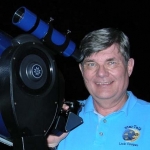I have some questions while going over my Graphs...
The definition for an Apnea Event is limited to 10 seconds or more. And of course we all strive to improve our AI scores. Most do not have access to 9 second Apneas or multiple 9 second Apneas unless we pour through Flow graphs that may or may not be available.
This comes to light in different ways: For Example many people on this board have stated " my AHI or AI is really low but I feel terrible, really worse than when it was higher". We all mark that up to Sleep Deprivation or Depleted Sleep Bank. It could certainly be many things... but one 10 second may not be the answer... it could be the ten 9 second Apneas that weren't recorded.
My Question: How did the definition arrive at 10 seconds?? I know it has to be a number and could have been 9 or 11 but... Is there any Medical Evidence that suggests that 10 seconds is the entry line for oxygen deprivation that makes a difference??
Does anyone have some Medical Links or was it a standard that was agreed upon by different "partners" in the diagnosis and assessment arena. Just curious... it will not change my approach but after looking at my own graphs and interpreting how I felt wasn't necessarily consistent. Could be the three 9 second Apneas in a row...
Nord
What Apnea Index ??
Re: What Apnea Index ??
The following doesn't really address your question of "why", but it does amplify the 10-second definition a bit:
In adults, episodes of disordered breathing must last 10 seconds or more before being considered an apnea or hypopnea. Normal resting respiratory rates in children are faster than those in adults. The child has a smaller functional residual capacity and a more compliant chest wall. As a result, children undergo oxygen desaturation more rapidly than adults whenever airflow is interrupted. A definition of apnea or hypopnea requiring that an event last 10 seconds or more before it is considered significant is somewhat arbitrary and does not take into account the physiologic differences between adults and children. Consequently, pediatric sleep centers use different duration criteria for labeling events such as apnea or hypopnea. In children, if obstruction occurs with 2 or more consecutive breaths, the event can be called an apnea or hypopnea, even if it lasts less than 10 seconds.
http://emedicine.medscape.com/article/1004104-overview
In adults, episodes of disordered breathing must last 10 seconds or more before being considered an apnea or hypopnea. Normal resting respiratory rates in children are faster than those in adults. The child has a smaller functional residual capacity and a more compliant chest wall. As a result, children undergo oxygen desaturation more rapidly than adults whenever airflow is interrupted. A definition of apnea or hypopnea requiring that an event last 10 seconds or more before it is considered significant is somewhat arbitrary and does not take into account the physiologic differences between adults and children. Consequently, pediatric sleep centers use different duration criteria for labeling events such as apnea or hypopnea. In children, if obstruction occurs with 2 or more consecutive breaths, the event can be called an apnea or hypopnea, even if it lasts less than 10 seconds.
http://emedicine.medscape.com/article/1004104-overview
The OSA patient died quietly in his sleep.
Unlike his passengers who died screaming as the car went over the cliff...
Unlike his passengers who died screaming as the car went over the cliff...
- SleepyBobR
- Posts: 312
- Joined: Tue Jan 19, 2010 4:42 pm
- Location: Toronto, Canada
Re: What Apnea Index ??
Along the same lines, 5 10 second apneas in an hour would give an AI of 5. So would 5 50 second apneas in an hour. The second scenario is clearly much worse than the first; the first would be considered borderline normal. Seems to me that AHI is really an incomplete metric as to severity of the condition.
_________________
| Mask: Simplus Full Face CPAP Mask with Headgear |
| Additional Comments: AirSense 10 AutoSet For Her @ 7-10 |
Re: What Apnea Index ??
Some interesting reading... that and the other articles about OSA... makes reference to "the definition" as found quote: American Academy of Sleep Medicine. International Classification of Sleep Disorders: Diagnostic and Coding Manual, Second Edition. Westchester, Ill: American Academy of Sleep Medicine; 2005.LinkC wrote:The following doesn't really address your question of "why", but it does amplify the 10-second definition a bit:
In adults, episodes of disordered breathing must last 10 seconds or more before being considered an apnea or hypopnea. Normal resting respiratory rates in children are faster than those in adults. The child has a smaller functional residual capacity and a more compliant chest wall. As a result, children undergo oxygen desaturation more rapidly than adults whenever airflow is interrupted. A definition of apnea or hypopnea requiring that an event last 10 seconds or more before it is considered significant is somewhat arbitrary and does not take into account the physiologic differences between adults and children. Consequently, pediatric sleep centers use different duration criteria for labeling events such as apnea or hypopnea. In children, if obstruction occurs with 2 or more consecutive breaths, the event can be called an apnea or hypopnea, even if it lasts less than 10 seconds.
http://emedicine.medscape.com/article/1004104-overview
I am off to do some research.
Nord
Re: What Apnea Index ??
You could consider the Apnea duration not a good indicative test at how serious the Apnea is, but the AHI is really there to show how many you have and not the duration/severity.
To have an Apnea last for 50 seconds is a long time. Sure you can hold your breath, David Blaine did it for nearly 9 minutes when he was in the water tank but he had to slow his heart rate down massively, most people will probably be gasping for air really badly in 50 seconds.
This is the main reason why we have to have sleep studies because the AHI represents on average how many Apnea/Hypopnea's an hour but it's just that an average. So Sleep Doctors need to look at each hourly graph, also look at the times where it may not have been classed as an Apnea (e.g. <10 seconds) as well as the duration of the Apnea.
Without my machine, my sleep study said I had an AHI = 141.2 (now that's an average). That equates to an average of 2.35 Apnea/Hyopneas a minute.
Before I knew really much about sleep apnea I asked the sleep centre nurse what that meant in laymans terms. She said, I stopped breathing twice per minute, and each time for approx 15 seconds. So you breath for 15 seconds, stop breathing for 15 seconds, breath again for 15 seconds, stop breathing again for 15 seconds. Amazed as I was (I think my jaw dropped at that point) she said so you are suffocated 50% of the time per minute for 7.5 hours of your sleep.
To have an Apnea last for 50 seconds is a long time. Sure you can hold your breath, David Blaine did it for nearly 9 minutes when he was in the water tank but he had to slow his heart rate down massively, most people will probably be gasping for air really badly in 50 seconds.
This is the main reason why we have to have sleep studies because the AHI represents on average how many Apnea/Hypopnea's an hour but it's just that an average. So Sleep Doctors need to look at each hourly graph, also look at the times where it may not have been classed as an Apnea (e.g. <10 seconds) as well as the duration of the Apnea.
Without my machine, my sleep study said I had an AHI = 141.2 (now that's an average). That equates to an average of 2.35 Apnea/Hyopneas a minute.
Before I knew really much about sleep apnea I asked the sleep centre nurse what that meant in laymans terms. She said, I stopped breathing twice per minute, and each time for approx 15 seconds. So you breath for 15 seconds, stop breathing for 15 seconds, breath again for 15 seconds, stop breathing again for 15 seconds. Amazed as I was (I think my jaw dropped at that point) she said so you are suffocated 50% of the time per minute for 7.5 hours of your sleep.
Re: What Apnea Index ??
Maybe new metric might is in the future of CPAP machines? One that takes into account the length of apneas, and more importantly include O2 levels during sleep.
_________________
| Machine: ResMed AirSense™ 10 AutoSet™ CPAP Machine with HumidAir™ Heated Humidifier |
| Mask: AirFit™ P10 Nasal Pillow CPAP Mask with Headgear |
| Additional Comments: 15-18 cm, EPR 1, PAPcap |
Sleep well and live better!
Re: What Apnea Index ??
Thanks for your input SleepyBob and Dave... but, I am not searching the severity of condition of Apnea.
I know what the definition is. I am wondering how five 10 second Apneas affects your body.
Is the measure five 10 second Apneas directly related to Oxygen Desaturation???
Is that how the standard of AI = 5.0 is entry level Sleep Apnea because at that level... your blood cannot restore oxygen fast enough to recover properly.
Just a question of standards I guess. Do people here find that their oximeter results are directly relatable to AI or AHI
Just seems to me that CPAP is great for therapy and recording results of that therapy (AHI) but there are other variables that are included in a sleep study. The true measure of "feeling Better" may be blood/ oxygen level tracking and perhaps lowering our AHI is only part of that answer.
Collecting and studying Respiration data has led me to question why my respirations can be very irregular maybe spastic and sometimes lead to Apnea... but always lead to a sleep disturbances. I can have a very low AHI but not feel very rested or even very well.
Nord
I know what the definition is. I am wondering how five 10 second Apneas affects your body.
Is the measure five 10 second Apneas directly related to Oxygen Desaturation???
Is that how the standard of AI = 5.0 is entry level Sleep Apnea because at that level... your blood cannot restore oxygen fast enough to recover properly.
Just a question of standards I guess. Do people here find that their oximeter results are directly relatable to AI or AHI
Just seems to me that CPAP is great for therapy and recording results of that therapy (AHI) but there are other variables that are included in a sleep study. The true measure of "feeling Better" may be blood/ oxygen level tracking and perhaps lowering our AHI is only part of that answer.
Collecting and studying Respiration data has led me to question why my respirations can be very irregular maybe spastic and sometimes lead to Apnea... but always lead to a sleep disturbances. I can have a very low AHI but not feel very rested or even very well.
Nord
Re: What Apnea Index ??
I am kinda new to looking at the results on the ResScan Software.
I have been checking my detailed results each morning and find that when I first fall asleep (first half hour when I go to bed) I get about 5 or 6 AI's each around 15 seconds or so.
Then I run through the rest of the night with none or maybe 1 AI event of 10 seconds.
Not sure that is due to my S8 adjusting (I have my S8 on CPAP mode at 9 CM, no EPR, no Ramp) or me. Might just be me squirming around in bed before I actually fall asleep.
Interesting stuff.
Tom............
I have been checking my detailed results each morning and find that when I first fall asleep (first half hour when I go to bed) I get about 5 or 6 AI's each around 15 seconds or so.
Then I run through the rest of the night with none or maybe 1 AI event of 10 seconds.
Not sure that is due to my S8 adjusting (I have my S8 on CPAP mode at 9 CM, no EPR, no Ramp) or me. Might just be me squirming around in bed before I actually fall asleep.
Interesting stuff.
Tom............
_________________
| Machine: ResMed AirSense™ 10 AutoSet™ CPAP Machine with HumidAir™ Heated Humidifier |
| Mask: Mirage Quattro™ Full Face CPAP Mask with Headgear |
| Additional Comments: Sleepyhead for Windows 7 |
Tom...........

















